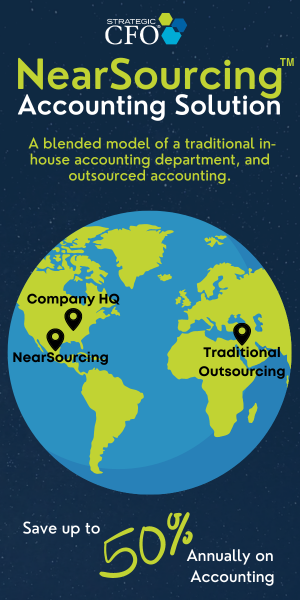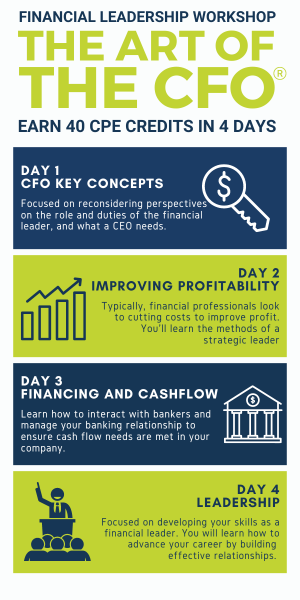Embrace Technology for Financial Insights
Embrace technology to gain valuable financial insights that can drive business growth and success. Leveraging automation tools in your financial processes can streamline repetitive tasks, saving time and reducing errors. By automating tasks such as invoicing, expense tracking, and payroll, you free up valuable resources to focus on strategic financial decisions.
In addition to automation, embracing analytics is crucial for maximizing business value. Analyzing financial data using advanced tools can uncover trends, patterns, and opportunities that may have gone unnoticed. By harnessing the power of analytics, you can make data-driven decisions that optimize performance and drive profitability.
Integrating automation and analytics into your financial operations not only increases efficiency but also enhances decision-making capabilities. These technological advancements provide real-time insights, enabling you to adapt quickly to changing market conditions and make informed decisions that propel your business forward. Embrace technology wholeheartedly to stay ahead of the curve and unlock the full potential of your financial leadership.
Foster a Culture of Financial Innovation
If you want your business to thrive, it’s crucial to encourage creative ideas among your team. Drive financial experimentation to explore new opportunities and ways of doing things. Support risk-taking initiatives that can lead to innovative financial strategies and increased business value.
Encourage Creative Ideas
To foster a culture of financial innovation within your organization, encourage and embrace creative ideas from all team members. Here are three key ways to encourage creative ideas:
- Idea Generation: Implement brainstorming techniques like mind mapping or the six thinking hats method to stimulate idea generation sessions.
- Innovation Workshops: Host innovation workshops to facilitate creative problem-solving and encourage out-of-the-box thinking among your team members.
- Cross-Functional Collaboration: Encourage collaboration between departments to bring diverse perspectives together, fostering a culture of innovation and creativity in financial decision-making processes.
Drive Financial Experimentation
To cultivate a culture of financial innovation, prompt your team to actively engage in driving financial experimentation as a means to continuously uncover new opportunities for value creation and growth. Encouraging an experimentation mindset within your financial team will lead to the exploration of innovative approaches that can potentially revolutionize your business strategies. By adopting this approach, you empower your team to test new ideas, processes, and financial models, allowing for the discovery of more efficient ways to drive business value. Embracing a culture of financial experimentation not only fosters creativity but also instills a sense of adaptability and resilience within your team, enabling them to navigate changing market landscapes with confidence and agility. Stay open to new ideas, and encourage your team to think outside the box to unlock hidden potentials for business success.
Support Risk-Taking Initiatives
Supporting risk-taking initiatives is essential to fostering a culture of financial innovation within your organization. When it comes to this critical aspect of financial leadership, consider the following:
- Encourage calculated risks: Promote a mindset where employees feel empowered to take risks within a structured framework that emphasizes risk management.
- Create incentives for innovation: Reward and recognize individuals or teams who successfully implement innovative ideas that lead to growth opportunities.
- Provide resources for experimentation: Allocate dedicated resources, whether financial or human capital, to support and nurture risk-taking initiatives that have the potential to drive business growth.
Implement Data-Driven Decision-Making
By leveraging data analytics, businesses can make informed decisions that drive growth and profitability. Data visualization techniques play a crucial role in presenting complex data in a visual format that is easy to understand. This aids in identifying trends, patterns, and outliers, enabling you to make strategic decisions based on concrete evidence. Additionally, predictive analytics empowers you to forecast future outcomes with greater accuracy, helping you anticipate market trends and customer behavior.
Financial forecasting is another essential aspect of data-driven decision-making. By analyzing historical data and market indicators, you can develop detailed financial projections that guide your strategic planning. Scenario analysis allows you to evaluate various business scenarios by changing key variables, providing insights into potential risks and opportunities.
Incorporating these data-driven approaches into your decision-making process enhances your ability to adapt to changing market conditions and drive sustainable growth. Remember, the key is not just collecting data but deriving actionable insights that propel your business forward.
Collaborate Across Departments for Synergy
Leverage the insights gained from data-driven decision-making to foster collaboration across departments for synergy in achieving shared business goals. When it comes to maximizing business value through innovative financial leadership, cross functional collaboration and synergy play a crucial role in driving success. Here are three key ways to enhance teamwork and collaboration across departments:
- Establish Clear Communication Channels: Ensure that there are open lines of communication between departments to facilitate the sharing of ideas, insights, and resources. Encourage regular meetings and brainstorming sessions to promote collaboration.
- Define Common Objectives: Align departmental goals with the overarching business objectives to create a unified vision. By working towards a common purpose, teams can pool their expertise and resources for maximum impact.
- Encourage Knowledge Sharing: Foster a culture of learning and development where employees are encouraged to share their expertise and insights with colleagues from other departments. This knowledge exchange can lead to innovative solutions and new perspectives that drive business growth through synergy.
Develop Forward-Looking Financial Strategies
When looking to develop forward-looking financial strategies, you should focus on proactive financial planning, future-focused budgeting, and strategic investment decisions. By being proactive in your financial planning, you can anticipate challenges and opportunities before they arise. Future-focused budgeting ensures your resources are allocated in alignment with your long-term goals, while strategic investment decisions can drive growth and sustainability in your business.
Proactive Financial Planning
To enhance your business’s long-term success, it is crucial to actively develop forward-looking financial strategies through proactive financial planning. Here are three key ways to excel in this area:
- Proactive Forecasting: Anticipate financial trends and challenges ahead of time to make informed decisions.
- Strategic Partnerships: Collaborate with other businesses and financial experts to gain valuable insights and expand your resources.
- Financial Agility and Scenario Planning: Stay adaptable by preparing for various financial scenarios and having contingency plans in place.
Future-Focused Budgeting
Developing future-focused budgeting strategies is essential for businesses aiming to secure long-term financial stability and growth. By incorporating agile forecasting techniques and long-term visioning into your budgeting process, you can adapt to changing market conditions and stay ahead of the competition. Agile forecasting allows you to quickly adjust your financial plans based on real-time data and market trends, ensuring that your budget remains relevant and effective. Long term visioning helps you set strategic financial goals that align with your overall business objectives, guiding your budgeting decisions towards sustainable growth and profitability. Embracing these forward-looking financial strategies will position your business for success in the ever-evolving market landscape.
Strategic Investment Decisions
To strategically enhance your business’s financial future, focus on making informed investment decisions that align with your long-term goals and vision. When it comes to strategic investment decisions, consider the following key points:
- Investment Analysis: Conduct thorough investment analysis to evaluate potential opportunities and risks, ensuring that each decision is backed by data and insights.
- Strategic Planning: Integrate your investment decisions into your overall strategic plan, ensuring that they support your business’s long-term growth and sustainability.
- Capital Allocation, Risk Management: Carefully allocate capital to investments with the right balance of risk and return, prioritizing risk management to safeguard your business’s financial health.
Engage in Continuous Financial Education
By continuously expanding your financial knowledge, you can enhance your understanding of key concepts essential for maximizing business value. Continuous learning and professional development in the field of finance are crucial for staying up-to-date with industry trends, regulations, and best practices. Engaging in ongoing financial education allows you to adapt to changing economic conditions, make informed decisions, and identify new opportunities for growth within your organization.
To effectively engage in continuous financial education, consider enrolling in relevant courses, workshops, or seminars to deepen your understanding of financial strategies and techniques. Networking with other finance professionals can also provide valuable insights and perspectives that can broaden your knowledge base. Additionally, reading industry publications, following thought leaders in finance, and participating in online forums or webinars can help you stay informed about the latest developments in the financial world.
Prioritize Sustainability in Financial Planning
Expanding your financial knowledge through continuous education sets the foundation for prioritizing sustainability in financial planning. When focusing on sustainability, you not only enhance the long-term value of your business but also contribute to a better world. Here are three key points to help you prioritize sustainability in your financial planning:
- Embrace Sustainable Growth: Incorporating sustainable practices into your financial strategies can lead to long-term success and resilience for your business. By considering environmental and social impacts, you can create a more robust and future-proof financial plan.
- Explore Ethical Investments: Investing in companies that align with your values and ethical standards can not only generate financial returns but also promote positive change in society. Ethical investments offer a way to grow your wealth while supporting causes you believe in.
- Integrate Sustainability Metrics: Including sustainability metrics in your financial reports can provide a comprehensive view of your business’s performance. Tracking key sustainability indicators alongside financial data can help you make informed decisions that benefit both your business and the environment. By prioritizing sustainability in your financial planning, you can drive positive outcomes for your business and the world.
Conclusion
In conclusion, by embracing technology, fostering innovation, and prioritizing sustainability in financial planning, you can maximize your business value through innovative financial leadership. Remember to collaborate with other departments, make data-driven decisions, and continuously educate yourself on financial trends. With these strategies in place, you can stay ahead of the curve and drive success for your organization. At Strategic CFO®, we are committed to helping you achieve your financial goals and elevate your business to new heights.










